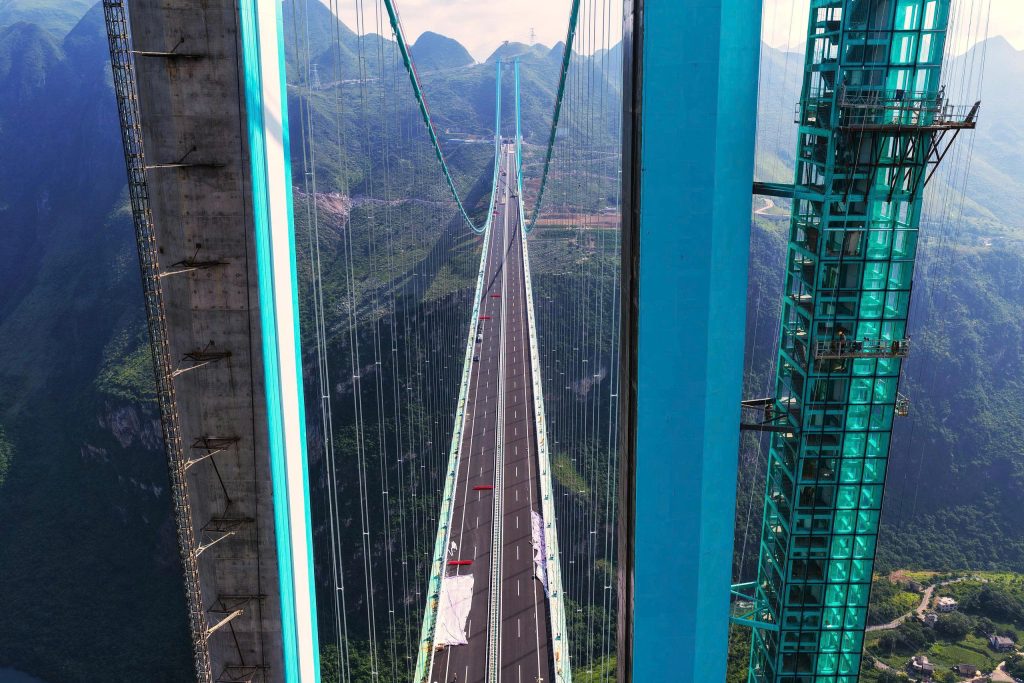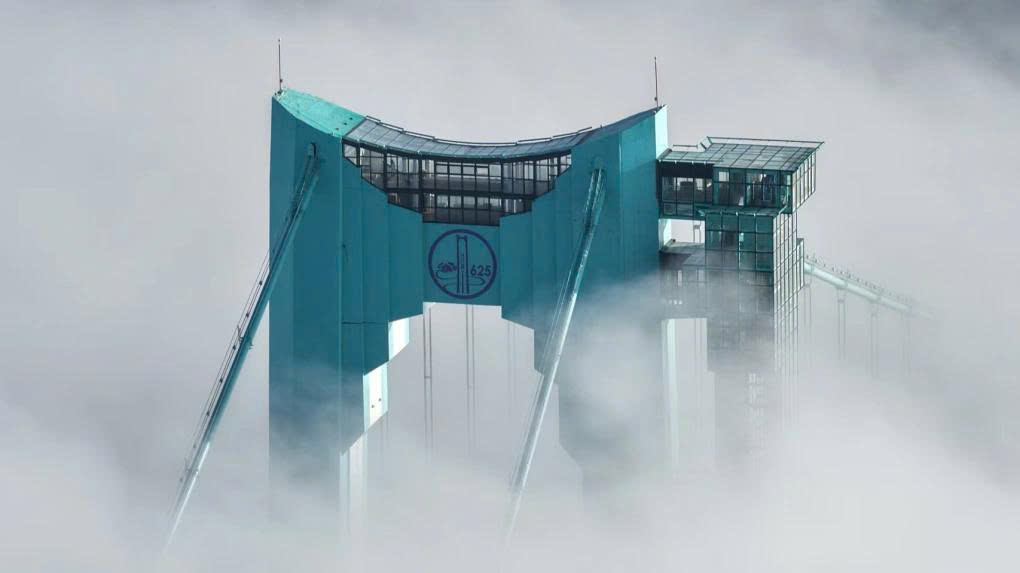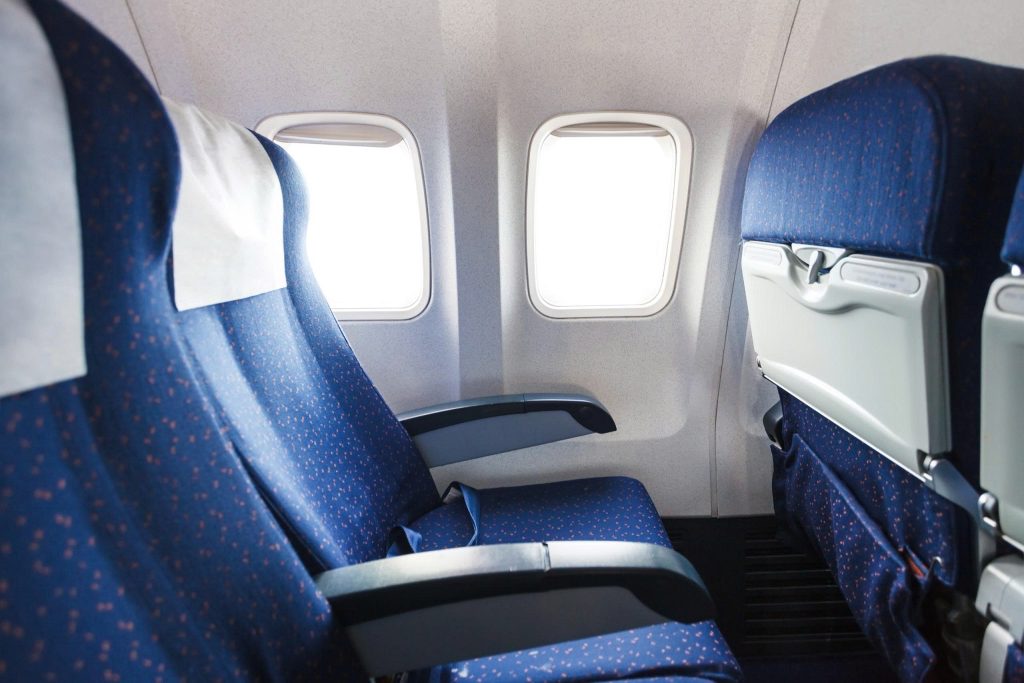Perched at a height of 800 meters above the river, a coffee shop along with several thrilling adventure tourism services are integrated into the world’s highest bridge, which spans China’s Huajiang Grand Canyon.
The world’s highest bridge, named Huajiang Bridge, located in Guizhou Province, southwestern China, officially opened to traffic on September 28th. It is considered the country’s first combined road-bridge and tourism complex.
Visitors can experience a 207-meter-high scenic elevator that whisks them to the top of the bridge in just one minute, where they can then enjoy a coffee at a shop situated 800 meters above the river level. Additionally, the bridge features a vast 1,000-square-meter glass observation deck, offering a direct view down to the river from an altitude of over 600 meters, alongside adventurous activities such as sky walking, bungee jumping, and low-altitude parachuting.

The Huajiang Bridge holds several world records. With a height of 625 meters from the deck down to the river, it is the world’s highest bridge. Its main span of 1,420 meters is also the largest bridge span in a mountainous region. This iconic structure is a vital part of the Liuzhi-Anlong Expressway, stretching 2,890 meters across the canyon often dubbed the “Earth’s crack.” Thanks to the bridge, the travel time across the canyon is dramatically reduced from two hours to only two minutes.
The project is expected to become an engine for regional economic growth, rather than merely serving a transportation purpose.

During the three years of construction, the project implemented numerous cutting-edge technologies, ranging from satellite-guided operations to the use of drones for navigation in high-precision aerial tasks. Engineers achieved millimeter-level accuracy at a height of 600 meters. Notably, the “smart cable” system, featuring embedded fiber-optic sensors, allows for continuous monitoring of stress, temperature, and humidity, ensuring the structure’s long-term durability.
To tackle the challenge posed by the 1,420-meter main span, the engineering team pioneered the use of forging and welding technology for the cable saddle, which reduced the weight of each saddle to 41.3 tons while increasing the compressive strength by 44%. This innovation also simplified transportation and installation.
Furthermore, the team of engineers ground local dolomite rock into a powder to replace fly ash—a scarce material—thereby saving approximately 5 million RMB (about $700,000 USD).
(According to CGTN)

















